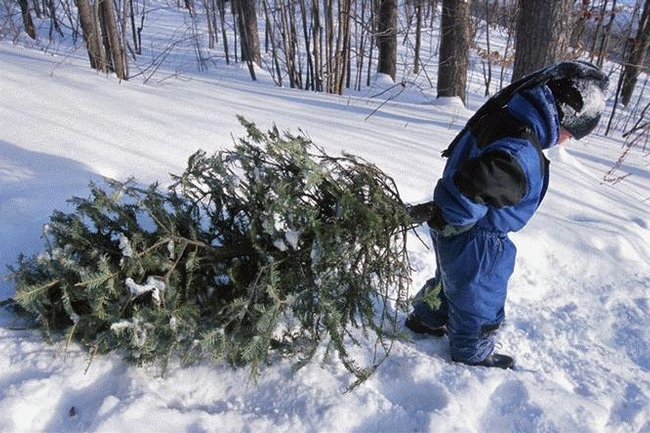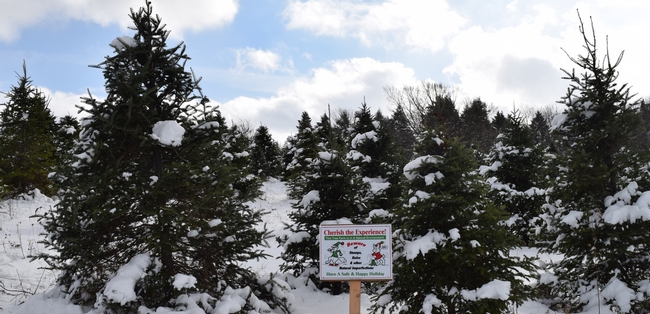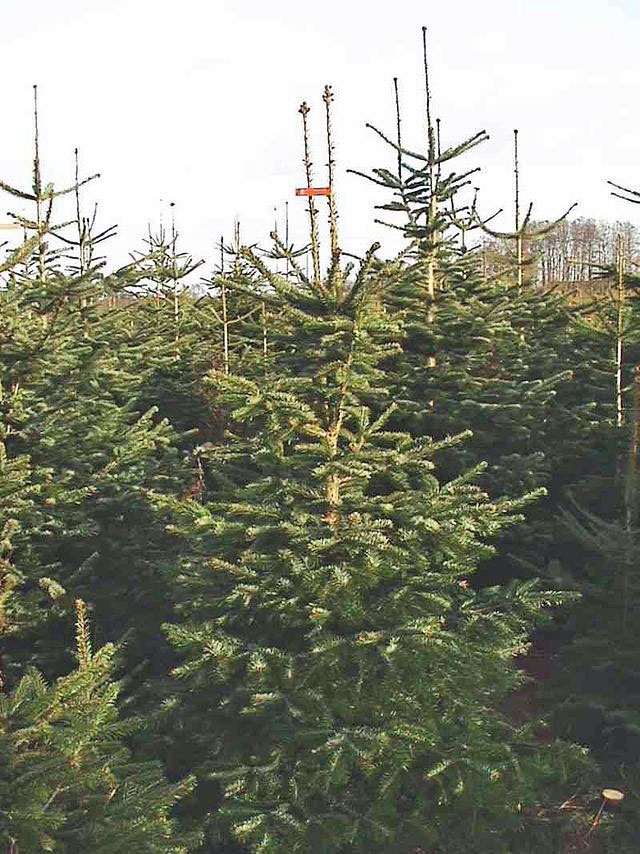Posts Tagged: Christmas trees
Can harvesting Christmas trees help the forest?
California forests are overstocked with conifers, and California residents want to decorate their homes during the holiday season with Christmas trees. The smart harvest of Christmas trees can kill two birds with one stone, according to UC Cooperative Extension forestry advisor Susie Kocher. Kocher spoke to Capital Public Radio reporter Ezra David Romero about the prospect of thinning the forest by taking home trees.
"It's a great win-win solution," Kocher said. "You get the public out in the forest, you do good work reducing the density of trees."
Kocher, who lives in Lake Tahoe, holds a family Christmas tree harvest party every year. With $10 permits from the Lake Tahoe Basin Management Unit, they trek through snow to select their trees. This year the management unit sold 2,000 permits. Kocher believes the program could be ramped up to further benefit forests.
“By removing some of the smaller trees, we are doing some of the work,” Kocher said. If left in place, the small trees grow larger, and more human resources, equipment and funds are needed to remove them. Moreover, the income from permit sales can be used for other forest-thinning projects.
However, some foresters are skeptical that harvesting Christmas trees is a realistic solution to management of California forests.
“It's great to have the masses come up during the holiday season full of mirth and cheer,” said Joseph Flannery with the Tahoe National Forest. “But I don't think there's the infrastructure in place to really make a dent in the hazardous fuels reduction needed.”
This story was also covered for KTVU Fox Channel 2 in the Bay Area by Lisa Fernandez.
“You need a 4-wheel drive, and yes, you trudge through snow,” Kocher said. “It's not for everyone. But for those who want that adventure, it's super fun. I do it because I don't think there's a substitute for a real tree in the house. And we always turn it into a family party.”
Besides, she said, “I feel good about removing excess small trees.”
'Real' Christmas trees support farmers and the environment
Most real Christmas trees sold in California are raised on farms, creating jobs and boosting the economies in rural areas.
That's just one reason UC Cooperative Extension advisor Lynn Wunderlich encourages the use of fresh-cut Christmas trees during the holiday season.
"This is an age-old debate," Wunderlich said. The American Christmas Tree Association says that PVC used in artificial trees is recyclable. If a household decorates with the same artificial tree for at least four years, the carbon footprint will be smaller than that of a household that purchases a real tree every year.
But the impact goes deeper. Wunderlich points out that artificial trees are mainly made in Asia. They have to travel a great distance to the U.S. compared to an American-farmed tree, eating up natural resources during transport. "Buy American," Wunderlich says.
Besides, there are the transcendent benefits of real Christmas trees. Farmed trees provide open space and wildlife habitat during the off-season, and fill the home with a natural pine scent during holidays.
Their role in sequestering carbon is aided by a production practice used by many farmers, called "stump culture."
"They use the same root system to regrow another tree, so the trees are regenerated," Wunderlich said. "Trees are replanted regularly in other farming culture. Christmas trees sequester carbon. Nearly a ton of carbon per acre of trees, depending on species and number of trees planted on the land."
While artificial trees end up landfills or energy-intense recycling plants, live trees are biodegradable. They can be naturally recycled by composting or shredded to use as mulch. Many communities offer curb-side pickup in the days after Christmas.
While farmed trees can be purchased on tree lots, home improvement stores, even grocery and drug stores, Wunderlich says a trip to a choose-and-cut tree farm is an enchanting family outing. Many Christmas tree farmers also provide food, crafts, activities and visits with Santa.
“Families can visit the farmer year after year as their children grow, so that's part of the experience,” Wunderlich said.
Resources:
The California Christmas Tree Association maintains a directory of choose-and-cut Christmas tree farms around state.
Some National Forests allow Christmas tree cutting with a permit. Read more here.
Christmas tree farmers growing Nordmann fir asked to look out for new pest
Some research plantings of Nordmann fir at Washington State University and one Washington farmer's field have been invaded by an adelgid that appears to be closely related to silver fir woolly adelgids, a common pest on Nordmann fir in Europe. Adelgids (pronounced uh-DEL-gids) are certain types of aphids that feed on conifers.
“Fortunately, adelgids attacking Nordmann fir haven't been reported in California, but we want our growers to be aware of them and to let me know if they see symptoms on Nordmann or Turkish fir,” Wunderlich said.
White, cottony masses on tree branches and twisted, curled and discolored needles are signs of adelgid infestation.
In California, growers produce Christmas trees valued at about $6 million per year, according to the USDA's National Agricultural Statistics Service.
Nordmann fir has become a popular species for Christmas tree growers in the Sierra foothills. Native of the Caucasus in Turkey and the Republic of Georgia, Nordmanns have rich color, excellent structure, good needle retention and strong branches for ornament display. Still more advantageous is their resistance to pests and diseases that plague other popular tree species, like white and red fir.
“Because of Nordmann fir, we've been able to plant Christmas trees in areas where we could not grow white fir due to Phytophthora,” Wunderlich said. “Consumers are realizing they like it and are asking for the species.”
If the adelgid makes its way to California, Wunderlich is prepared to work with local growers to devise a control strategy based on the results of research her Cooperative Extension counterparts in Washington are conducting on the pest.
California Christmas tree farmers who suspect their trees have been infested with the silver fir woolly adelgid are encouraged to contact Wunderlich at (530) 621-5505, lrwunderlich@ucanr.edu.
An initiative to maintain and enhance sustainable natural ecosystems security is part of the UC Division of Agriculture and Natural Resources Strategic Vision 2025.




